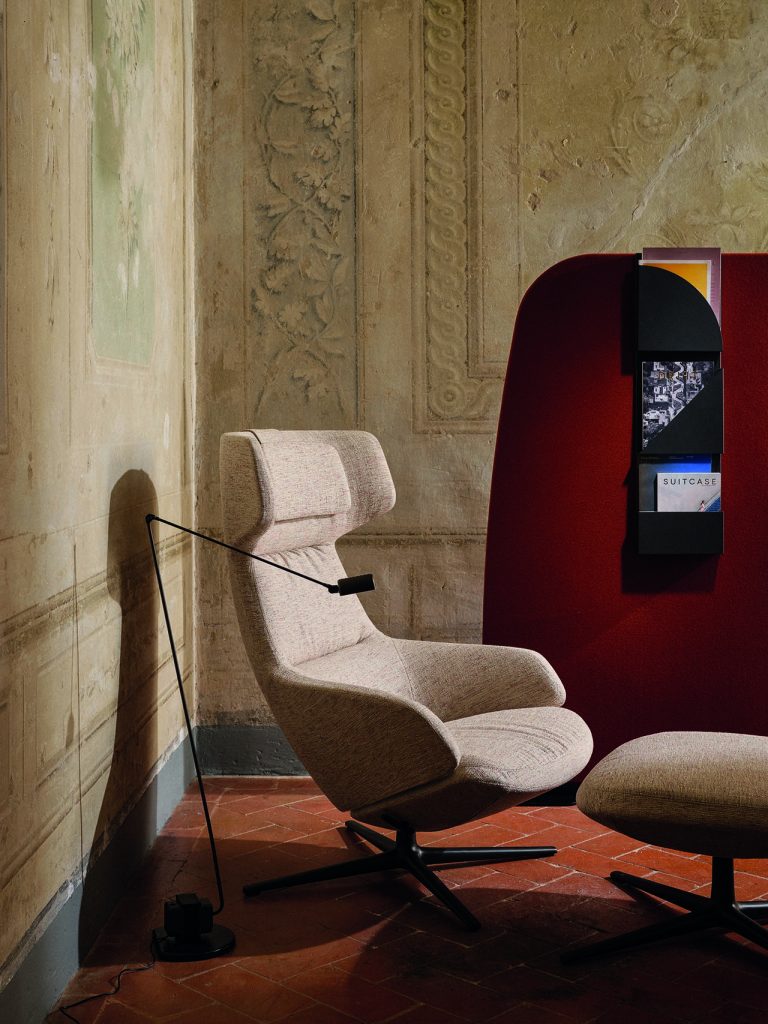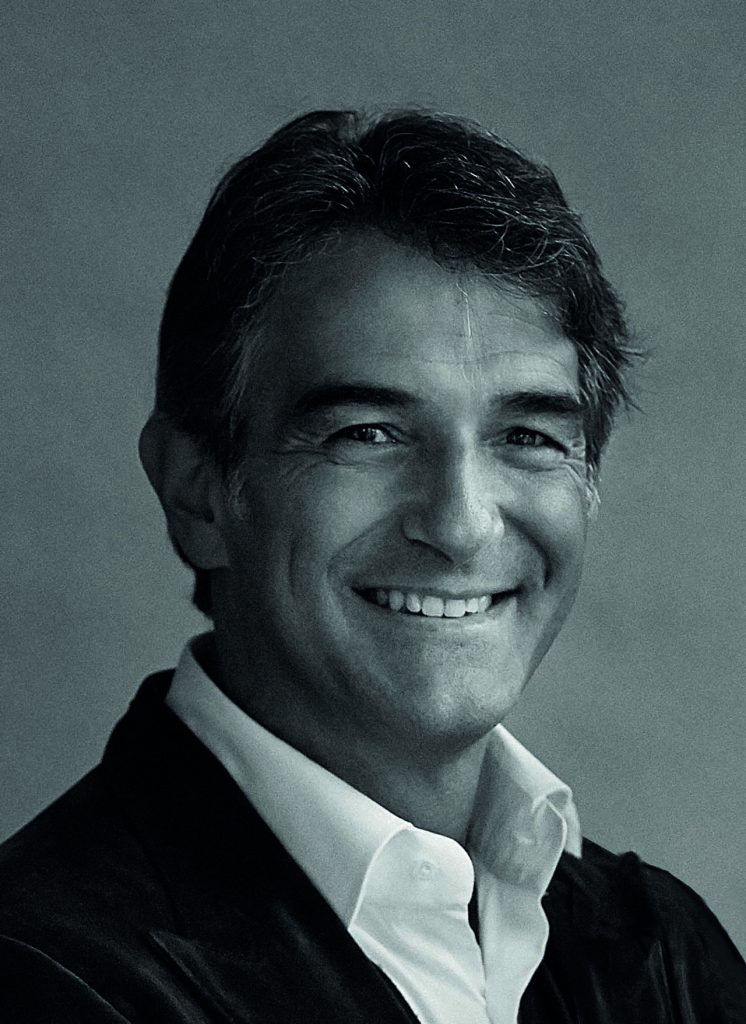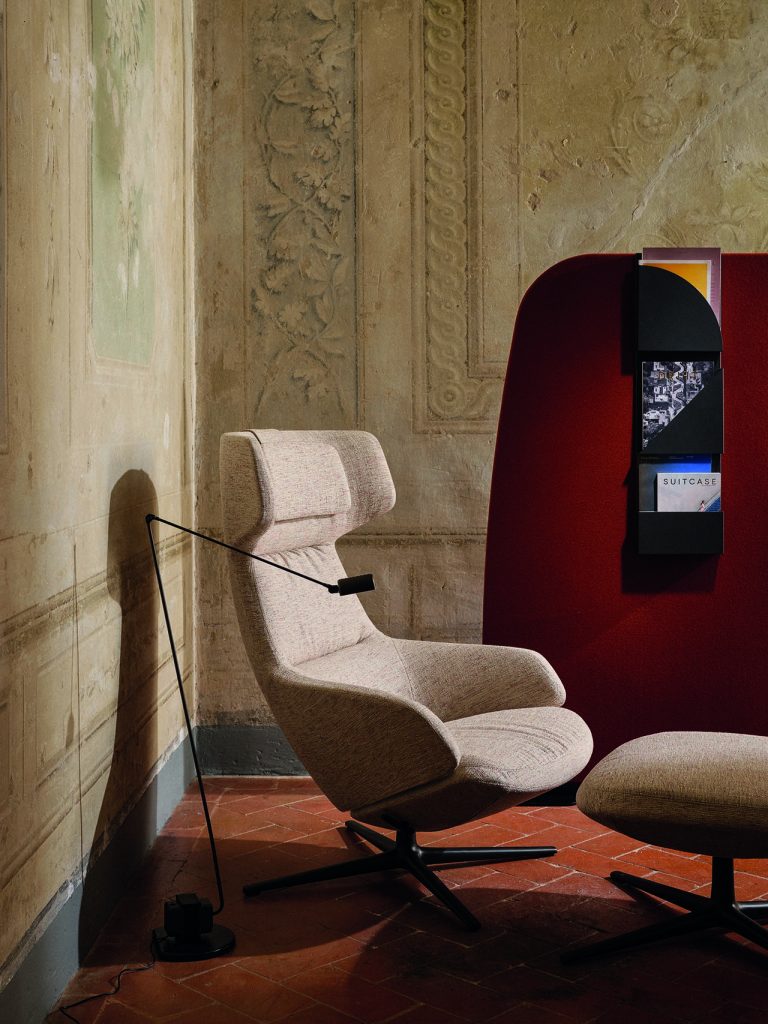Recycled furniture, a department dedicated to sustainability, mapping of the environmental performance of products. Claudio Feltrin, President of Arper, tells us about the process of rethinking his industrial supply chain from a sustainable perspective. And he talks to us about the new adventure that awaits him, the Presidency of Federlegno.
You inaugurated your Arper Environmental Department in 2005. What drove the company to invest in sustainability before this word was an obvious thing as well as a trend?
The need arose from the desire to pursue a sense of utility that went beyond the manifest utility of products and pleasant signs that make the environment in which one lives pleasant. Spontaneously, we also wanted to relate to the surrounding environment and the social and productive context through everyone’s small actions that can improve the situation. The concept of sustainability summarizes this drive and is the result of a process: because we cannot limit ourselves to saying “I make a recyclable product and therefore I am sustainable”. The comparison with the foreign market also helped us: exports at Arper have always fluctuated around 90-93%, and this has led us to come into contact with advanced markets, more attentive to the issue of sustainability than we were in Italy in the early 2000s, when the concept was unclear. This is why we created the Arper Environmental Department, providing it with an internal team that, focusing on these issues, worked in tandem with the product development department.
Do you believe that the concept of sustainability still has unclear contours?
We operate in a market where sustainability is often mentioned out of turn: sometimes those who ask you haven’t even bothered to understand if what they are talking about makes sense or is off topic. The sustainable company is a complex system and it is its complexity that must be sustainable, otherwise it becomes an exercise in manners or opportunism as an end in itself. However, I believe that 2019 was a watershed year: the movement summed up in the name of Greta Thumberg reflected the sentiment of young people, who were rightly concerned about pollution and demographic issues. However, I believe that 2019 was a watershed year: the movement summed up in the name of Greta Thumberg reflected the sentiment of young people, who were rightly concerned about pollution and demographic issues.
Arper recently completed the mapping of the environmental performance of some of its products in the catalogue. How was it accomplished?
I can’t make it clear that a chair consumes less energy than the previous one if I don’t have a measuring tape. For this reason we resorted to four labels, four parameters that could summarize this complexity and that were at the same time easy to understand even by end consumers: CO2 consumption, water consumption, the use of recycled materials, to what extent these materials are recyclable. In the future, the ideal would be to be able to arrive at a certification that concisely summarizes the measure of sustainability, as happens for household appliances or houses. In this way, the consumer could be given the opportunity to choose not only on the basis of aesthetics or price, but also on the basis of energy consumption.

Among the new features in this year’s catalog is the Aston Club armchair, designed by Jean-Marie Massaud. A feather in the cap given that each of its components is recyclable. What is the work behind the scenes to achieve this result?
Making a product recyclable means thinking about how to replace its components and how to plan its re-industrialization. On the other hand, the characteristics of materials are constantly evolving. At the beginning of 2000 there were very few recycled plastics, while today it has become a little simpler, even if the aesthetic factor and mechanical resistance remain two Achilles’ heels. As regards aesthetics, which is a primary factor in furnishing, it is necessary to reconsider the assumption of perfection in a product: as with the knot of wood, we must accept the intrinsic characteristics of the product and not see them as defects. If I want a sustainable seat made of recycled plastic I have to accept the idea that it may be “salt and pepper”, that it has impurities. A perfect recycled plastic would involve such a treatment process that it would end up being a contradiction.
For the other novelty, the Adell seat by Lievore + Altherr Désile Park, you have designed a shell in 80% recycled polypropylene whose texture evokes tree rings and the striations of shells with 500 hand-designed lines. Where does the idea of recalling nature come from for a material that today we see as its antithesis?
We tried to make a connection: we made a recycled product and used an aesthetic that made the surface of the product less synthetic, that closely recalled natural materials, while still playing around with shapes that would have been difficult to reproduce without plastic. This summarizes the philosophy of our company and our principles: following an educational path while remaining within a commercial discourse. The risk of a utopian path is that it is a discussion that we are the only ones who understand. Ours, however, aims to be an understandable and shareable message.

Finally, a question on current events: congratulations on your appointment as President of Federlegno. What strategic rethinking and priorities do you see for the Federation in such a delicate and particular phase of economic relaunch?
The period is clearly not the best, we are in command of the ship in the middle of the storm: it is certainly easier to arrive when everything is going well, but there are some circumstances that cannot be chosen. In my program there are five important points and the first takes up what we have talked about up to this moment: sustainability. It is a great opportunity for our system, which must become aware that the funding allocated is not a sterile support for the sector, but an impulse towards a sustainable reconversion that the Federation must encourage, stimulating companies to seize the opportunity and facilitating the access to resources. This goes hand in hand with the second point, the supply chain network and human capital: the Federation must support our companies, especially the smaller ones, to remain stronger on the globalized market also through training centers that are already in the area and that they need coordination.
And the other points?
Corporate culture is the third point. With Assarredo I tried to establish a new way of working also through the AssarredoLAB, a format that allowed us to meet more than 600 entrepreneurs with whom we shared the work topics identified by the Council and from whom we collected feedback and needs. To make business culture evolve, we need traveling companions: I look at what we are already doing with the academic world and PoliDesign, but I also think of the Triennale, the spearhead of our culture. Another strategic point is the relationship with Confindustria, a strategic partner with which we must strengthen collaboration and coordination, also with the aim of not duplicating services. Finally, the last point concerns digitalisation and events. The Salone del Mobile in Milan is the showcase of our sector, over the years we have managed to make it the main point of reference in the world of furniture and wood. This asset must be further enhanced, strengthening that part of the Show that has not been developed enough, the digital one. This is why we are working to ensure that through an enhanced portal the Show achieves not only physical leadership, but also virtual leadership.
Did you miss the Salon this year?
I missed it and we missed it a lot, I believe it is both for us directly involved, and in Milan and all of Italy because the energy that is generated with the Salone is unparalleled. And we are already eager to cross the threshold of next year’s Salon, hoping that it will turn into a good sign of recovery for the post-Covid era.
Published on Domusweb on 2 November 2020. All rights reserved
